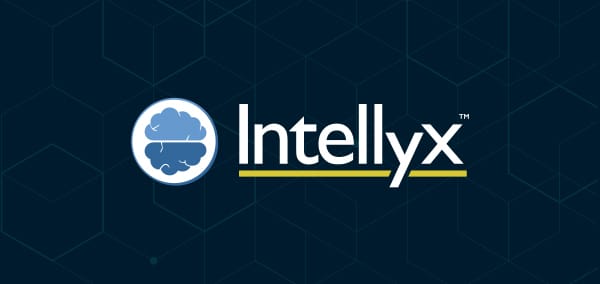
Zoom out from the video viewer. It’s time to take a look at how you approach the entire audience experience.
There are plenty of analytics solutions out there. However, some strategies provide a fragmented — or at least patched-together — view of the user journey. Bringing it all together into a single, continuous, holistic vision is the way forward.
Take a few minutes here to read about this topic in more detail. By the end, you should have an idea of what’s possible with contemporary analytics and why overdependence on legacy systems might be bad for your bottom line.
Key takeaways:
-
- Traditional analytics look at a fragmented version of events.
- Viewer experience is a continuous journey that includes non-video aspects of your service.
- A holistic, start-to-finish view of audience QoE provides better insight when pursuing your business objectives.
What Is Viewer Experience, Really?
When you think of audience experience, you’ll probably think of different things depending on your professional role. The secret is that everybody’s right.
There is so much that goes into a viewer’s experience of your content. In fact, it goes beyond just the content. Audience experience happens even before they tap that play button.
So why do you even bother with audience experience? That might seem like a strange question when a person’s experience of your service is essentially the sole factor in their decision to be your customer. But why do you personally care?
There’s a reason executives care about QoE. Knowing it — measuring it, specifically — is necessary to make good decisions. Step back and ensure you’re getting the whole picture.
QoE can either accelerate or completely stop your progress towards key business objectives. Focusing on optimizing it has a huge positive impact on revenue, engagement, and audience size.
The bottom line is that you need to understand exactly what your viewers are experiencing. If they don’t have a good experience, you’re never going to see them again.
The Fragmented Approach
Publishers used to target the question of audience experience with metrics that came from a single source: The video player. You would have plenty of relevant data, but you wouldn’t get the entire story.
After a while, many companies also started considering app metrics as part of the audience experience. The exact treatment would depend on the organization. There was still a chance for a disconnect between the app aspect of the experience and the video aspect. If it came together at all, it was often messy.
This fragmented approach leads to opaque issues, slower insights, and a higher cost of ownership. To complicate matters, app analytics typically deal with discrete events — even if a publisher has made the move to a continuous, contextual, real-time analytics framework for the video experience.
The Audience Journey
A streaming video is a continuous experience. It’s a journey. It has a start, there are events that take place, and there’s an endpoint.
It’s easy to equate that video playback with the audience experience. However, when you’re trying to make complex business decisions, that equation doesn’t balance.
The fragmented approach to audience experience measurement inevitably leaves you with mysteries. You don’t want to have to guess when the future of your organization is on the line. Luckily, all the information you need is usually there once you zoom out and put everything in perspective.
Taking a Holistic View
To put all of this in context, imagine you run a VoD service and you’re optimizing for higher engagement in your ad-supported subscriber tier. You’ve benchmarked your current performance and found that it’s lacking when compared to your competition. Specifically, you’re seeing a high number of streaming attempts with some kind of early termination.
This is a key streaming metric, but you can’t seem to explain the failures with any of your existing analytics. There are no technical issues or deliberate blocks that would create these events. The app isn’t crashing, either, according to your separate analytics stack.
You still want to keep eyes on your content to improve ad revenue, and you don’t want to get into a trial-and-error situation. It’s time to take a step back.
This was a common case that led to one of the earlier innovations in analytics: Ad performance tracking. If you had visibility into the pre-roll ad, you might notice that it buffered excessively, had extremely low quality, or even failed to play entirely, blocking playback. All of those events could push your audience away from the video — and potentially toward your competitors.
Looking at the Entire Journey
If you’re already taking census-level measurements of your video experience, you’re on the right track. You’re looking at arguably the most important aspect of the user journey.
Remember though: Video isn’t everything. It’s just the most important thing. Each user has more to their journey.
Almost every session will have other actions. Before they become viewers, maybe they browse a library of movies. Maybe they consume other types of media: Viewing upcoming match schedules or referencing team rosters, for example.
Even if you’re focusing on video-based KPIs, you can optimize based on non-video behavior. Do fewer clicks through your library result in more hours of playback for your ad-supported subscribers? Do viewers of certain sports streams have a higher chance to dig down into your statistics pages?
If you had end-to-end visibility on what was happening during each user’s journey, you could answer these types of questions. Then, you could take action that serves those audience sections. This could help you double down on specific target markets, such as live sports.
Unifying Experience Analytics and Bringing Your Organization into the Future
If you’re like most organizations in the streaming arena, you have a system that more or less works. However, if you’ve made it this far down the page, you also believe that things could work better. You’re right.
Overengineering on top of legacy or non-purpose-built systems increases your cost of ownership. It increases complexity without adding value. Above all, it keeps you from seeing the big picture.
There’s a better way. There’s a way that’s built from the ground up, specifically for your type of operation. You really can get the entire audience experience — apps included — for every viewer, every minute, every metric you care about. Check out our analytics technology or click here to see Conviva in action.







